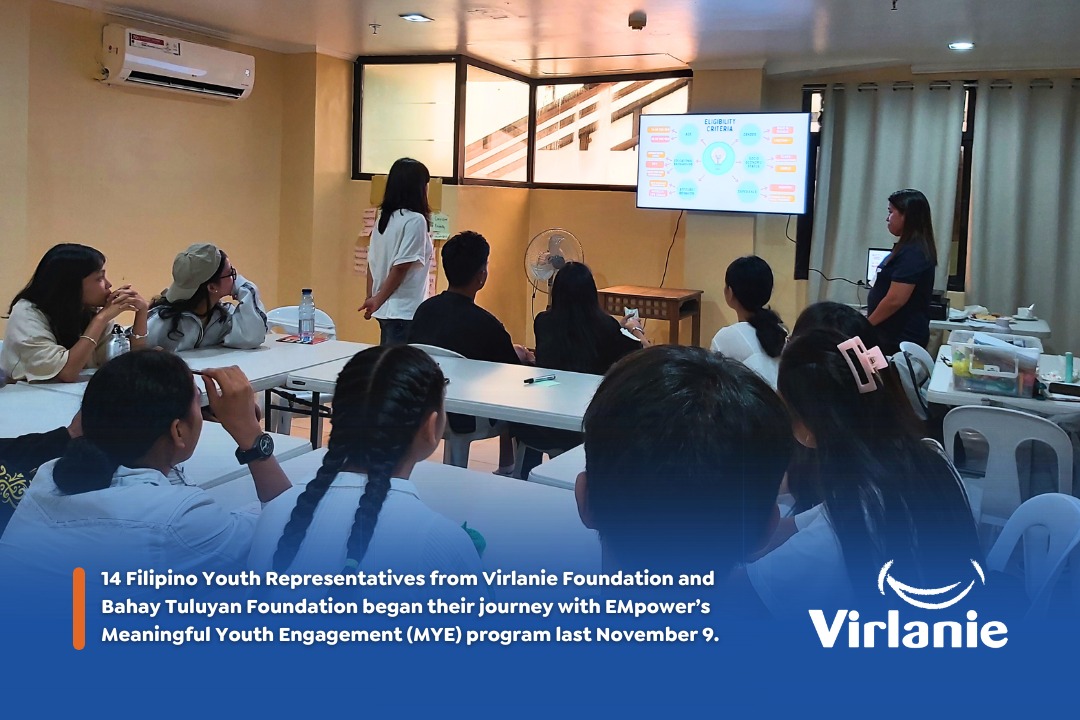
Virlanie, along with other Street Educators Network of Metro Manila Area Partners (SENMMAP) members and partners, organized a Feedback Training Workshop for Street Educators last May 6 to 9, 2019 at Stairway Foundation, Puerto Galera, Oriental Mindoro. The training gathered 20 street educators from 5 organizations working with and for children in street situations. The event was made possible through the support of Asmae Philippines and the ASYA Project, co-funded by the Erasmus+ Programme of the European Union.
The training is a replication of the Social Street Work Exchange of Practices held last January 2019. The participants, who work for street education program in their respective organizations, were able to share the best practices and learn from one another through the training.
Sharing of best practices
Divided in groups, the participants shared their experiences in the street and identified best practices in different aspects of social street work. The groups showcased the fruits of their discussion through posters, pantomime, role play, and simulation of training for children in street situations (CISS).
One of the participants, Jorge Villegas of Kuya Center shared, “I am grateful that Kuya Center was able to participate in this training. This is a kind of training that we look for—in which we can apply what we learn to the kids.”
UNCRC General Comment on Children in Street Situation (GC 21)
The workshop reiterated the importance of United Nations Convention on the Rights of the Child General Comment on Children in Street Situation (GC 21) released in June 2017, in the practice of social street work. It is a landmark document for children in street situations. GC 21 recognizes at the highest level, that children in street situations need to be protected, listened to and assisted. For the Philippines, GC 21 presents an opportunity to become a world-leader in terms of responding effectively and holistically to the needs of street-connected children through a framework of international best-practice.
The participants were refreshed about who their services are for: CISS. The CISS comprise of: (1) children who depend on the streets to live and/or work, whether alone, with peers or with family; and (2) a wider population of children who have formed strong connections with public spaces and for whom the street plays a vital role in their everyday lives and identities.
The principles of social street work
Another highlight of the training is the principles of social street work, where all of street educators’ efforts are grounded. These principles include respect and tolerance for the beneficiaries we serve, providing services where they are needed, building of trust-based relationship, and helping children to gain self-esteem and develop life-skills so they can actively participate in society. It is also emphasized that non-formal education is needed to prevent children from being at risk and improve children’s wellbeing.
Objectives of social street work
The participants, themselves, identified why they need to do social street work. They were able to identify their objectives which include: (1) Reach children who were left behind; (2) Help children gain access to available resources in their communities; (3) Give children political and social awareness trainings.
Strategies in doing social street work
While the situation in the street is constantly changing, social street work still follows a scientific method. This means that through time, it has been proven to be effective. Among the common strategies that were used by the participants in their practice of social street work were: assessment of the area, regular visits to the community, courtesy call to the local authorities, establishing rapport, creation of intervention plan, monitoring and evaluation, and aftercare.
The participants shared that it is relevant to invent and reinvent approaches to better fit the current needs of CISS. As mentioned by Arlyne Fernandez, Deputy Executive Director of Virlanie, “One unique character of social street work is being fluid and flexible. We try to meet where our target beneficiaries are and try to provide services and programs based on their felt needs. We are not confined with one specific action or intervention. We never run out of ways to support our clients. We are flexible with our plans, interventions and tools as we try to adjust when our target clients are.”
ASMAE also presented the Asmae-Agence Française de Développement (AFD) Baseline study on street children in Manila, 2018. The baseline study will be available once the results and recommendations are finalized. The participants shared their recommendations for the study.
Susette Villaraiz who was once a child in street situation but now works as a Street Educator at Kanlungan sa Erma Ministry, Inc. said, “As a street educator, I learned how to handle kids better. It’s nice to get best practices from other agencies. This training serves as a motivation for former children in street situation like me, who now works as a Street Educator.”
SENMMAP is a local network of partners with street programs in Manila. Its members include Bahay Tuluyan, Child Hope, Kanlungan sa Erma Ministry, Inc., and Virlanie, supported by its partner,
ASMAE. All members participated in the training, with additional participants from Kuya Center.
Check out some of the photos taken during the workshop here: